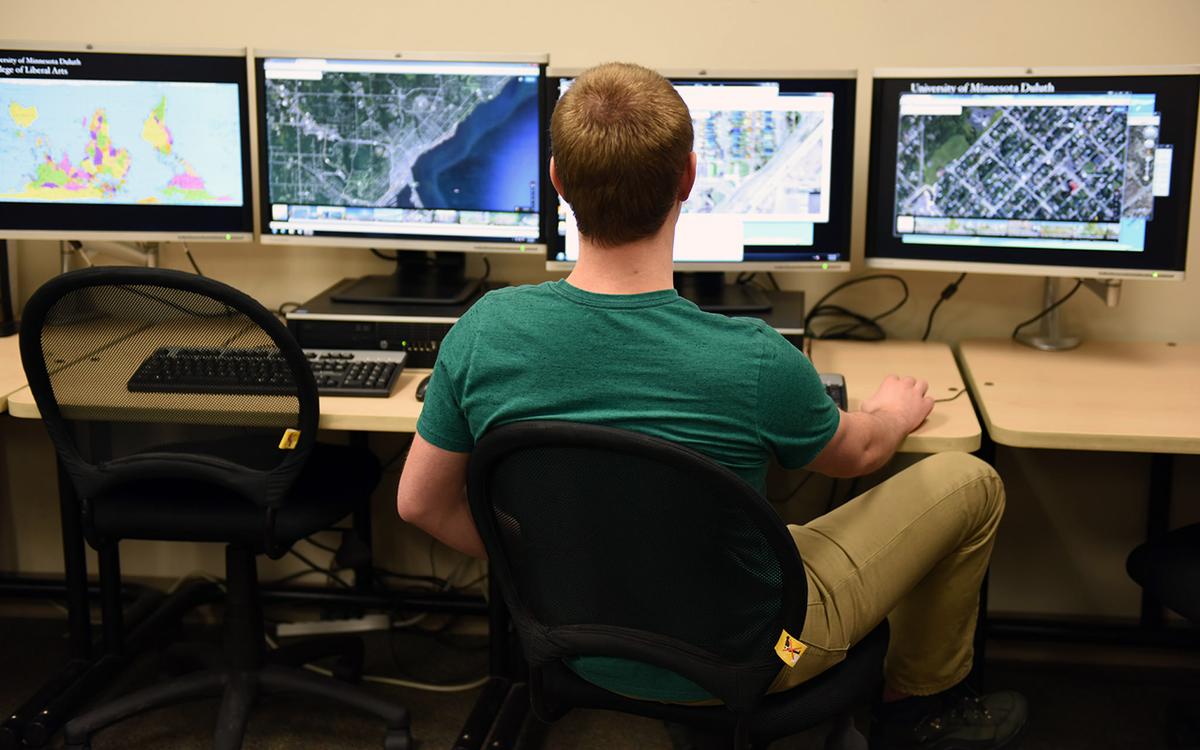The campus agency is creating a Solar Energy Potential Map Application for the City of Duluth - a huge project with great potential. “This project involves using aerial photos of the entire city to map out building footprints for the installation of solar panels and to provide a comprehensive look at what is possible in the different neighborhoods,” said Steve Graham, GAC Research Associate. “This is the first step in creating a public mapping application where users will be able to go in and select a building or their home and find out its solar potential. It will also give us an assessment of solar resources for both UMD and Duluth.”
1000 Hours
The project is a collaboration with Ecolibrium3, the UMN Energy Transition Lab (ETL), the Midwest Renewable Energy Association (MREA), the City of Duluth and the Great Plains Institiute (GPI). The high resolution aerial imagery was purchased by the City of Duluth and provided to UMD for this project. The elevation data used in the solar insolation model was acquired in a partnership project with the City of Duluth and the State of Minnesota.
“This initial step of creating footprints requires a lot of legwork,” said Graham. He estimates about a thousand hours will be spent on this phase of the project. To get the job done, the GAC hired students from across campus to digitize building footprint data (approximately 50,000 structures over 200 square feet). The GAC is looking for additional funds to digitize any remaining buildings for the city beyond the initial 1000 hours currently funded.
“Once the data has been created, there are so many possibilities and ways the information could be used,” Graham added.
Doing the work
Alex Nelson is a junior majoring in Urban and Regional Studies and is one of the eight students working with GIS software for long stretches. “This is really good preparation for the eight to five o’clock work world,” said Alex. “It’s also a good opportunity for me to learn. If I break things, I have Steve on hand to show me how to un-break it.”
Another person working on the project, Sean Kelliher, just graduated from UMD with an Environmental & Sustainability degree. He said, “It’s great experience and I’m passionate about this type of work, so I’m glad I can help out with this kind of project.”
